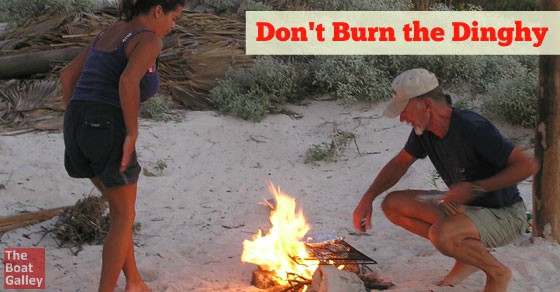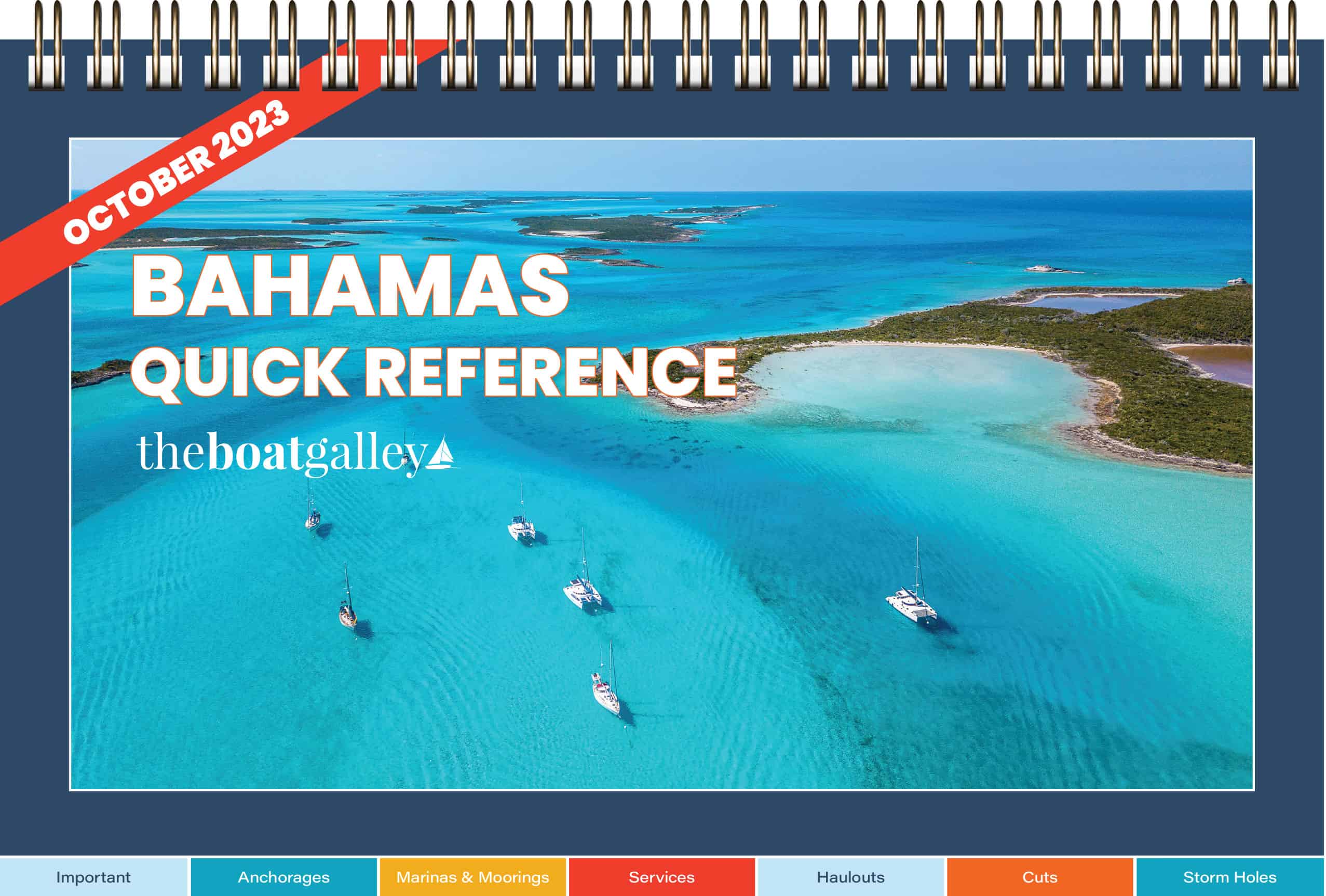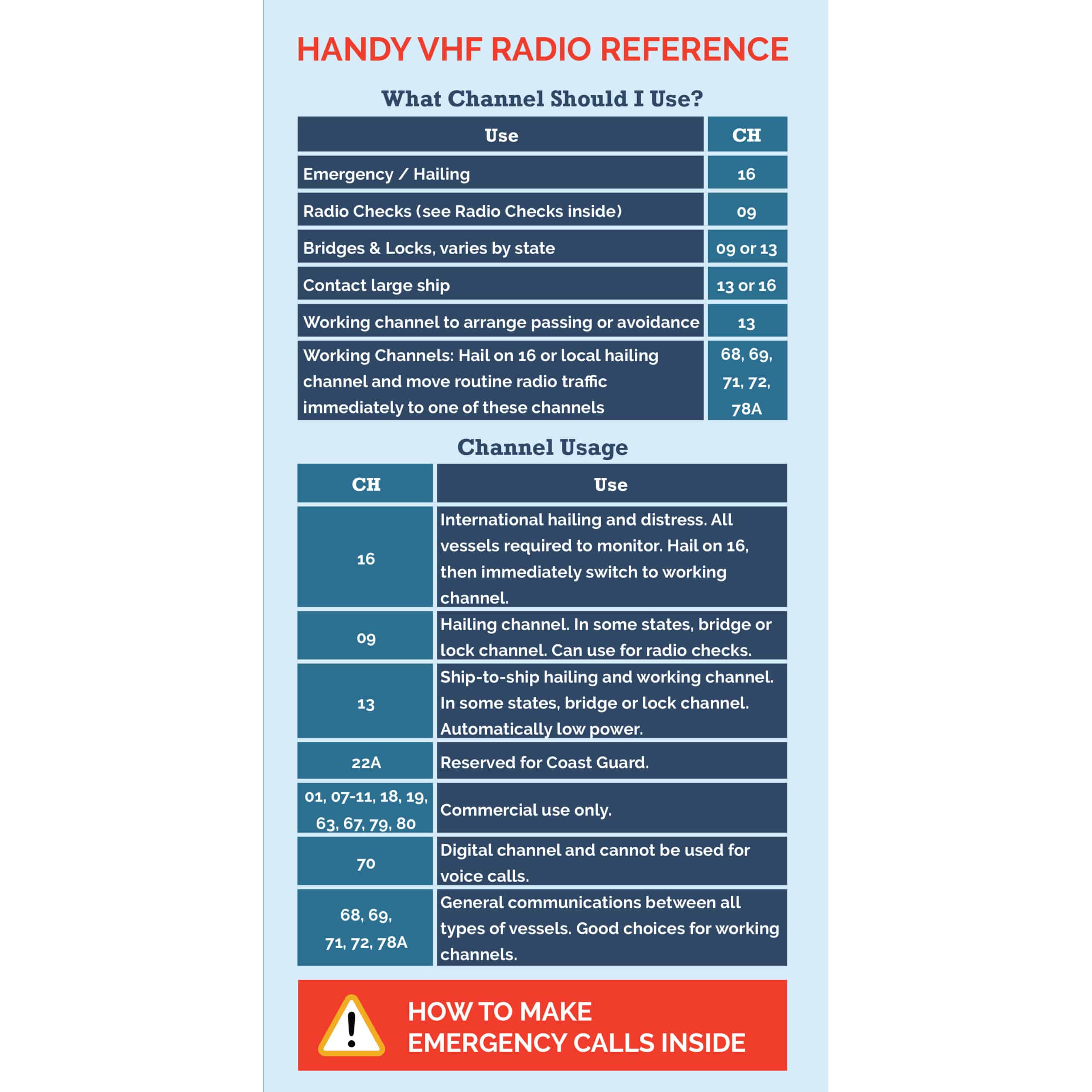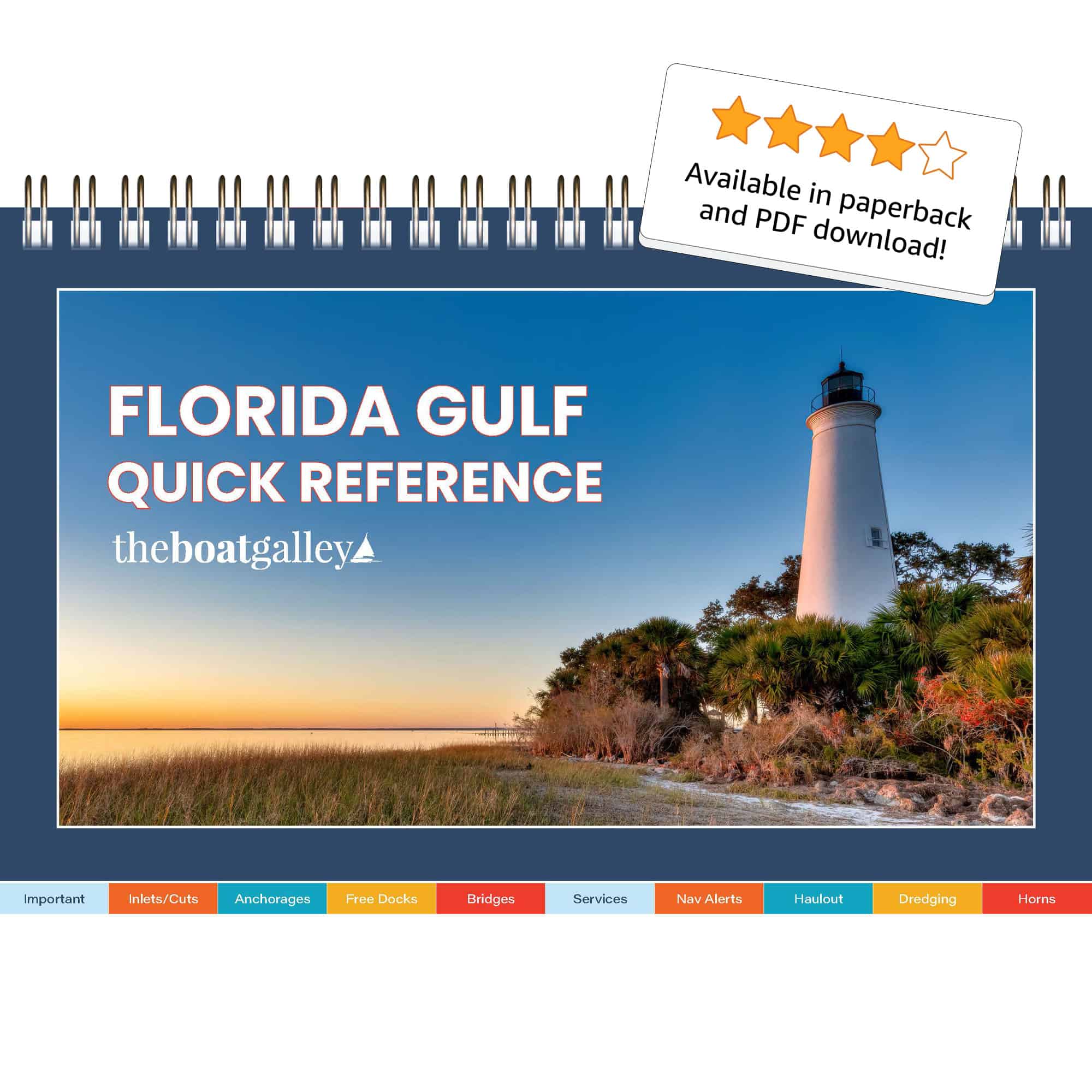A quick safety tip . . . any time you light a fire, make sure the wind can’t take embers towards the dinghy!
If you’re having a beach barbecue, beach dinghies sufficiently far away (and not downwind) that embers can’t make tiny pinholes in tubes or (much worse) set a gas tank on fire. This was the scenario that I happened to overhear two cruisers talking about at LoretoFest, which had apparently happened some years ago.
Luckily, they noticed what was happening and moved the dinghy while it was still at the “making pinholes” stage, but it must have been terrifying to move the dink knowing that there was a tank of gas there. And then, of course, they had a dinghy to repair the next day and rides to bum in the meantime.
And that got me thinking about a few other situations I’ve seen. On the first night of our first charter, we were bow and stern anchored in a small cove. We had planned to grill steaks to celebrate our first night, but the charcoal grill was on the stern and the wind had switched so that it was coming over the aft port quarter. Any charcoal embers would land right on deck!
Rather than move the boat — which wasn’t a realistic possibility given the size of the cove — my Dave and Jan’s David figured out how to move the grill and mount it on a lifeline stanchion at the “most downwind” point of the boat (fun with the minimal tool kit that’s on a charter boat). Worked perfectly and the embers fell harmlessly into the water.
The rest of the week, conventionally anchored and with the grill back in its original position on the stern rail, we were careful to move the dinghy to the side of the boat before lighting the grill at the stern. We also did this on Que Tal, even though she had a gas grill with lava rocks — more than once, a bit of marinade or fat would flame up and send embers over the side.
If you are cruising in a place where you are burning trash ashore, again be sure to light your fire well away from where the dinghy is beached.
Many marinas totally prohibit the use of grills (gas or charcoal), but if yours does permit it be sure to check wind direction and location of nearby boats and dinghies . . . and don’t leave it unattended, even for a minute!
Thinking about it in the abstract, it seems so simple to keep the dinghy away from flames. But when you’re having a party — and maybe a couple of other boats have their dinghies tied up to your boat — or you’re in a hurry, it’s easy to forget to check which way the wind is blowing and make sure nothing is in the “line of fire” — literally!

Quickly find anchorages, services, bridges, and more with our topic-focused, easy-to-use waterproof guides. Covering the ICW, Bahamas, Florida, and Chesapeake.
Explore All Guides

Carolyn Shearlock has lived aboard full-time for 17 years, splitting her time between a Tayana 37 monohull and a Gemini 105 catamaran. She’s cruised over 14,000 miles, from Pacific Mexico and Central America to Florida and the Bahamas, gaining firsthand experience with the joys and challenges of life on the water.
Through The Boat Galley, Carolyn has helped thousands of people explore, prepare for, and enjoy life afloat. She shares her expertise as an instructor at Cruisers University, in leading boating publications, and through her bestselling book, The Boat Galley Cookbook. She is passionate about helping others embark on their liveaboard journey—making life on the water simpler, safer, and more enjoyable.











So Many Beaches on Facebook says
Ahh! Too true! Our buddy boat almost burnt up their dink on New Year’s with some chinese lanterns. Who knew fire and dinks don’t mix 😉
Gerald Freeman says
This is a good safety tip. I actually had a close call experience where a fire nearly burnt my own dinghy plus several of my friends who were all tied together. We were relaxing off the beach from a fun day and we lit a fire. It was far away at the time and safe for most of the night. We ended playing football and the wind picked up the flame and blew it towards our boat. Luckily, we caught it in time but it definitely was a scary moment.
Rondi says
I’ve been on fire. In my Army years. Firefighters have a tendency to catch on fire. Especially in bunkers housing munitions of sorts. Here …. take my Dinghy and let me split.
Carolyn Shearlock says
Ouch!
Eve says
We had a scary experience aboard a bareboat charter on a brand new 52′ catamaran and learned the hard way how easy it is to catch a boat on fire. It was raining and my dumb cousin decided to move the grill to underneath the cockpit hardtop/flybridge. Of course, none of the responsible people aboard was paying attention. A grease fire quickly ensued and flames raced up the cockpit walls and onto the ceiling. My husband got it out quickly with the fire extinguisher, but it was quite the mess and we spent the evening scrubbing soot and scortch marks off the gelcoat with a tube of whitening toothpaste (it was all we had for cleaning and the boat was due back the early next morning). We were lucky we didn’t damage the boat ($7500 deposit!)
Jack B. says
I love fire. I used to be a fire breather for entertainment purposes some years back. When I bought my 35′ sailboat, it came with a sea-b-que on the the back rail. One of the first things I did was get ride of it. I laugh when people tell me, as a cruiser, you gotta have a BBQ. Nope! When you start things on fire as a professional, you are continuously reminder of how that “completely random, only one in a million chance”, seems to be the one most commonly reliable event to happen. This seems to also be true for things breaking, or events going wrong on sailboats and in sailboat fix-it projects.